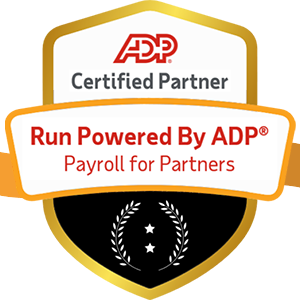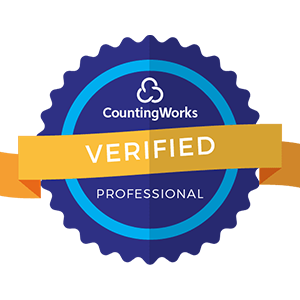
Introduction
As a business leader, one of your key responsibilities is ensuring your organization is prepared to navigate unexpected disruptions and maintain business continuity. A critical component of this is contingency planning for your workforce and payroll.
In this comprehensive guide, we'll explore the essentials of effective contingency payroll management, providing you with actionable insights, best practices, and frameworks to help fortify your business against potential crises. Whether you're a small startup or a large enterprise, the principles outlined here will empower you to create a resilient payroll system that can withstand the toughest challenges.
Understanding Contingency Payroll Management

At its core, contingency payroll management is the process of establishing backup plans and alternative strategies to ensure your employees continue to receive their paychecks in the event of a disruption to your regular payroll processes. These disruptions can stem from a wide range of scenarios, such as:
By proactively developing contingency plans, you can minimize the impact of these events on your workforce and maintain the financial stability of your organization.
In today's rapidly evolving business landscape, the ability to adapt quickly to change is a key differentiator between successful companies and those that struggle to survive. Here are some compelling reasons why investing in contingency payroll management is crucial:

Now that we've established the importance of contingency payroll management, let's dive into the essential components of a comprehensive plan. By addressing each of these elements, you can create a solid foundation for your organization's payroll resilience.
The first step in developing an effective contingency payroll plan is to identify and assess the potential risks that could disrupt your payroll processes. This involves:
By engaging in this proactive risk assessment, you can better understand your organization's unique challenges and tailor your contingency plans accordingly.
One of the most critical aspects of contingency payroll management is ensuring that you have reliable backup systems and data redundancy in place. This includes:
By implementing robust backup and redundancy measures, you can significantly reduce the risk of data loss and ensure that your payroll team has the tools they need to continue operations during a disruption.
In the event of a payroll disruption, clear and timely communication is essential to maintain employee trust and minimize confusion. Your contingency plan should include:
By establishing clear communication protocols in advance, you can help alleviate employee anxiety and maintain a sense of stability during challenging times.
Payroll disruptions can often arise from the unexpected absence of key personnel, whether due to illness, resignation, or other factors. To mitigate this risk, your contingency plan should include:
By investing in cross-training and succession planning, you can build a more resilient payroll team that is better equipped to handle disruptions and transitions.
Many organizations rely on external vendors and partners for various aspects of their payroll processes, such as software providers, benefits administrators, or tax filing services. Your contingency plan should include:
By proactively managing your vendor and partner relationships, you can minimize the risk of external disruptions impacting your payroll processes.
A contingency payroll plan is only effective if it remains up-to-date and adequately tested. To ensure your plan's ongoing relevance and reliability, you should:
By committing to regular testing and updating, you can ensure that your contingency payroll plan remains a living document that evolves with your organization's needs.

With the key elements of a robust contingency payroll plan in mind, let's explore some best practices for successfully implementing and maintaining your plan.
To ensure the success of your contingency payroll initiative, it's crucial to secure the support and buy-in of your organization's leadership team. This involves:
By securing executive buy-in, you can ensure that your contingency payroll plan receives the necessary resources, attention, and priority to be effective.
Effective contingency payroll management is not just about having the right plans and systems in place; it's also about fostering a culture of resilience throughout your organization. This involves:
By nurturing a culture of resilience, you can create a more adaptable and proactive workforce that is better prepared to navigate the challenges of unexpected disruptions.
Effective contingency payroll management requires collaboration and coordination with various stakeholders across your organization. This includes:
By actively collaborating with key stakeholders, you can ensure that your contingency payroll plan is well-integrated with your organization's overall operations and priorities.
Given the sensitive nature of payroll data, it's essential to prioritize data security and privacy in your contingency planning efforts. This involves:
By making data security and privacy a top priority, you can help safeguard your employees' personal information and maintain trust in your payroll processes.
In today's digital age, automation and technology can play a significant role in enhancing your contingency payroll management efforts. This includes:
By embracing automation and technology, you can create a more efficient, accurate, and resilient payroll system that is better equipped to handle the challenges of unexpected disruptions.
In a world of increasing uncertainty and complexity, effective contingency payroll management has become a critical component of overall business resilience. By proactively developing and implementing a robust contingency plan, you can help ensure that your employees continue to receive their paychecks, even in the face of unexpected disruptions.
Throughout this guide, we've explored the key elements of a comprehensive contingency payroll plan, including risk assessment, backup systems, communication protocols, cross-training, vendor management, and regular testing. We've also discussed best practices for successfully implementing and maintaining your plan, such as securing executive buy-in, fostering a culture of resilience, collaborating with key stakeholders, prioritizing data security, and embracing automation and technology.
By applying the principles and strategies outlined in this guide, you can take a significant step towards fortifying your organization against payroll disruptions and maintaining the trust and confidence of your employees. Remember, investing in contingency payroll management is not just about preparing for the worst; it's about positioning your organization for long-term success and resilience in the face of any challenge that may come your way.
As you embark on your contingency payroll journey, keep in mind that this is an ongoing process that requires continuous refinement, adaptation, and commitment. By staying vigilant, proactive, and open to new ideas and approaches, you can create a payroll system that not only weathers the storms of today but also serves as a foundation for your organization's growth and success in the years to come.


